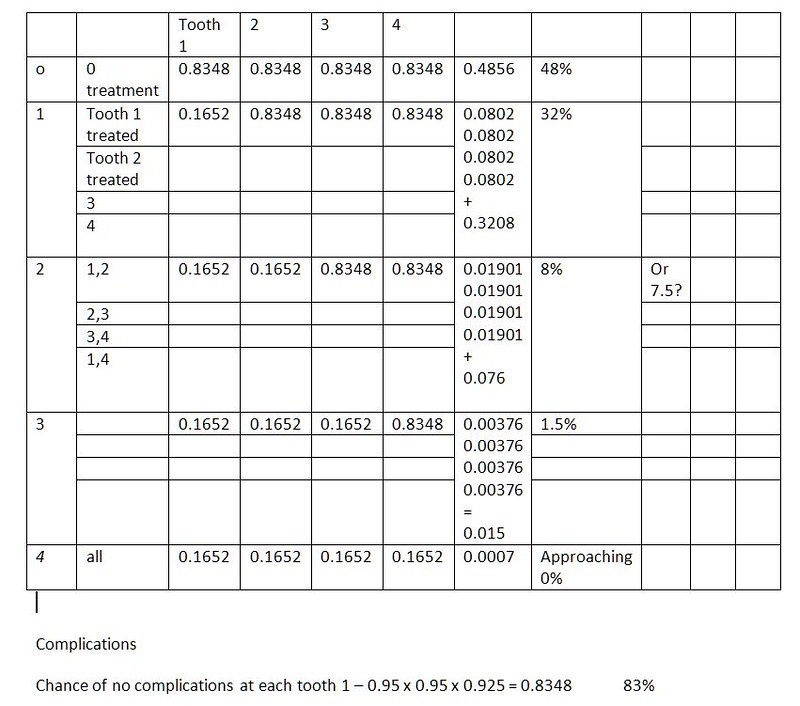You know exactly where you are coming from. I was just thinking today that these statistics skills would make a good 2 or 3-hour study sessions for dentists.
I am writing detailed prognoses for personal injury cases, this involves predicting forward what may happen with and without treatment. It is interesting and I have never understood the maths aspect like this before. Makes me better at it, it is all thanks to you and your maths rival there

Clinically I am not really giving much information in statistic form. Some people ask for percentages, the 'phrase more likely than not' is useful in law and to explain things for patients in terms they understand.
Your articles refers to dental radiographs. The information on risk of dental radiographs is here:
http://www.fgdp.org.uk/publications...ation-doses-and-risks-in-dental-practice.ashx
There are exquisitely clear guidelines for when dentists should take radiographs and about 15 years ago there were two UK laws which apply to dentists taking dental x-ray pictures in clinics.
It is important to limit exposure to infants and children. Old-timers have nothing to worry about.
We are taught the skill of critically appraising scientific studies but the statistics is hard. I am a bit pants at maths and the written word, I have to work very hard at it.
Children's dentistry in actual fact has some of the best evidence base, but often dental studies are too 'low powered', study groups n= 20 or 100 and the studies are meaningless or worse, poorly designed and so mismatched that few can be used for meta-analysis.
Another interesting things Dowie is 'changing clinicians perspective', you give older clinicians (dentists and doctors) statistics and guidelines and their prescribing moves a little bit over, it is shifts toward 'the evidence'. You give the same to a younger clinician, or someone who is has an evidence-based practice and they adopt it immediately.
Making the material easy for the clinicians to use, appreciate and buy into can only help.

Thanks





